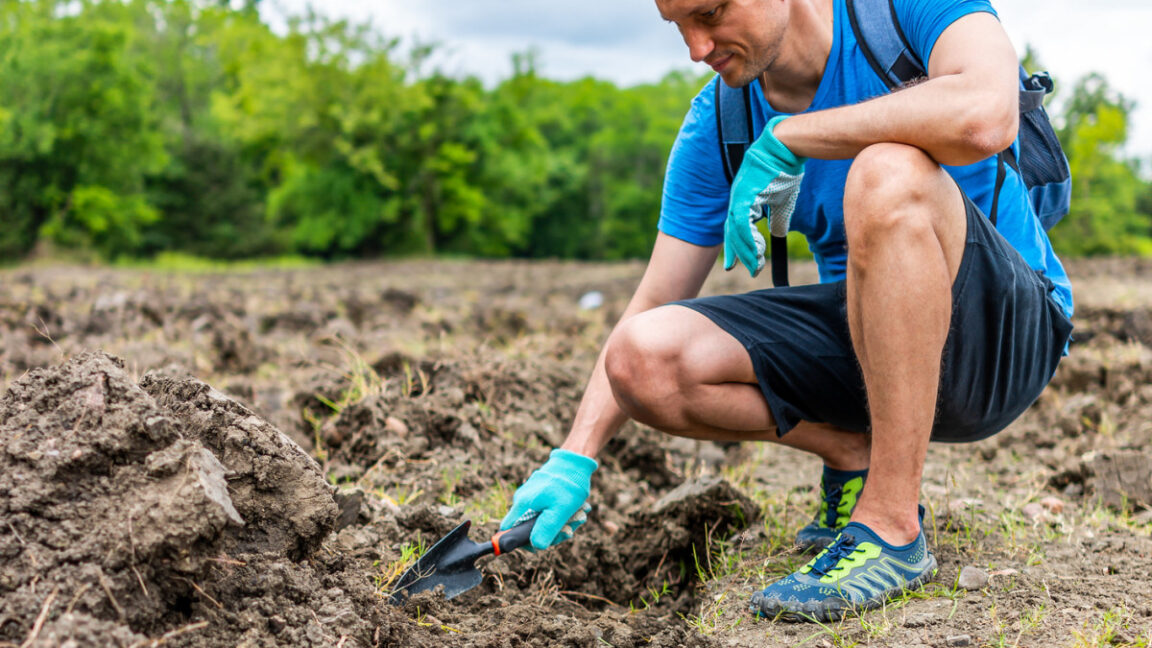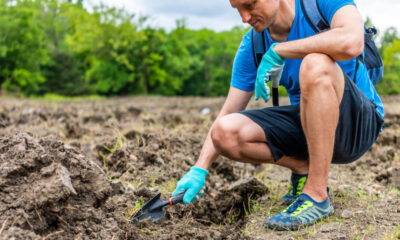Science
Explore the Unique Diamond Hunting Experience in Arkansas

In southwest Arkansas, Crater of Diamonds State Park offers a unique opportunity for the public to hunt for diamonds. For the price of a movie ticket, visitors can dig in a 37-acre search field, keeping any diamonds they find. This remarkable site, located near Murfreesboro, sits atop an ancient volcanic pipe that erupted approximately 100 million years ago, bringing diamonds from deep within the Earth’s mantle to the surface.
The park opened in 1972, following numerous commercial mining attempts that began after John Wesley Huddleston discovered the first diamonds there in 1906. Despite efforts by several companies to profit from the mine, they faced challenges due to the relatively low concentration of diamonds compared to other commercial operations. Instead of leasing the land to private enterprises, the state government transformed it into a public park, making it the only diamond-producing site worldwide where anyone can search for diamonds in their original volcanic matrix.
Since its inception as a state park, Crater of Diamonds has welcomed over 35,000 diamonds found by visitors. The park operates on a straightforward principle: anything you discover belongs to you, without any hidden fees or revenue sharing.
How the Diamond Search Works
The diamond search area consists of regularly tilled soil that the park staff plows to bring fresh material to the surface. Visitors do not require special permits, and there are no restrictions on how often they can return. However, the park prohibits the use of motor-driven equipment and requires that any holes dug be filled before leaving.
Travel blogger Liz Mays, who visited the park in 2023, observed a diverse range of visitors, from families and hobbyists to seasoned diggers equipped with various tools. While some searched casually, others utilized wagons and wheelbarrows to transport their supplies. The park offers rentals of basic tools on a first-come, first-served basis, or visitors can bring their own shovels, buckets, and sifting screens.
Facilities include two covered pavilions equipped with water troughs and tables for wet sifting, as well as open sluice boxes with hand-operated pumps. Visitors are also welcome to bring their own canopies or tents to secure shade during their search.
Diamonds found at the park often appear as metallic or glassy pebbles, rather than the polished gems many envision. The volcanic soil also contains a variety of other gemstones, such as amethyst, garnet, jasper, agate, and various types of quartz, all of which visitors can keep.
The largest diamond unearthed in the United States, the 40.23-carat Uncle Sam diamond, was discovered in this field in 1924. Recent finds include a 4.38-carat yellow diamond uncovered by California visitor Noreen Wredberg in September 2021, and a 7.46-carat diamond found by visitor Julien Navas in 2024. In 2017, the park reported over 180,000 visitors who collectively found 450 certified diamonds, with 299 being white, 72 brown, and 74 yellow.
The Visitor Experience
Admission to Crater of Diamonds is affordable, costing $15 for adults and $7 for children aged 6 to 12. Families looking to maximize their time at the park can camp overnight and return at dawn for another chance to search. During the summer months, the park features a small water park, recognizing the challenges of heat that can exceed 110° Fahrenheit.
Occasionally, rain can turn the field muddy, which experienced diggers prefer, as it makes spotting diamonds easier. As Mays noted, “Most visitors leave with a handful of interesting rocks, some newfound knowledge, and an urgent need for a long shower.”
For those who do not find any diamonds, options still exist. Potentially, one could purchase a diamond-making machine online for approximately $200,000. Nevertheless, the thrill of discovery at Crater of Diamonds remains unmatched, offering a unique adventure for those willing to dig in the dirt.
-

 Politics4 weeks ago
Politics4 weeks agoSecwepemc First Nation Seeks Aboriginal Title Over Kamloops Area
-

 World5 months ago
World5 months agoScientists Unearth Ancient Antarctic Ice to Unlock Climate Secrets
-

 Entertainment5 months ago
Entertainment5 months agoTrump and McCormick to Announce $70 Billion Energy Investments
-

 Science5 months ago
Science5 months agoFour Astronauts Return to Earth After International Space Station Mission
-

 Lifestyle5 months ago
Lifestyle5 months agoTransLink Launches Food Truck Program to Boost Revenue in Vancouver
-

 Technology3 months ago
Technology3 months agoApple Notes Enhances Functionality with Markdown Support in macOS 26
-

 Lifestyle3 months ago
Lifestyle3 months agoManitoba’s Burger Champion Shines Again Amid Dining Innovations
-

 Top Stories2 months ago
Top Stories2 months agoUrgent Update: Fatal Crash on Highway 99 Claims Life of Pitt Meadows Man
-

 Politics4 months ago
Politics4 months agoUkrainian Tennis Star Elina Svitolina Faces Death Threats Online
-

 Sports5 months ago
Sports5 months agoSearch Underway for Missing Hunter Amid Hokkaido Bear Emergency
-

 Politics5 months ago
Politics5 months agoCarney Engages First Nations Leaders at Development Law Summit
-

 Technology5 months ago
Technology5 months agoFrosthaven Launches Early Access on July 31, 2025















